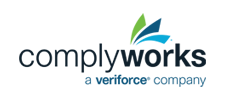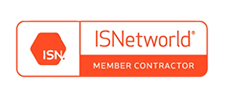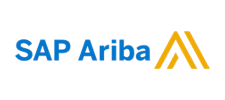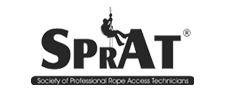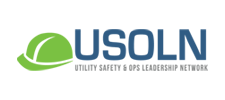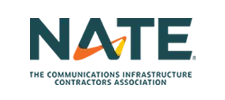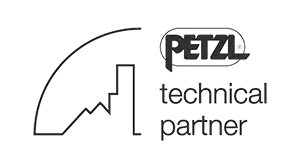Job Hazard Analysis: An Essential Step in Workplace Safety

One of the most effective tools to achieve this is the Job Hazard Analysis (JHA). Here, we delve into what JHAs are, their importance, and how to implement them effectively in the workplace.
The Importance of Job Hazard Analyses (JHAs) in the Workplace
In today's safety-focused work environments, robust pre-job hazard analysis is essential for operational efficiency and regulatory compliance. A key method to achieve this is through Job Hazard Analysis (JHA). This article explains what JHAs are, their significance in workplace safety, and practical steps for effective implementation.
What is a Job Hazard Analysis (JHA)?
A Job Hazard Analysis (JHA), also known as a Job Safety Analysis (JSA) or Risk Assessment (RA), is a systematic process that identifies potential workplace hazards and outlines methods to eliminate, control, or protect employees from these risks. Once completed, a JHA serves both as a training resource and a pre-task safety checklist. Various formats are available to create an effective and logical JHA.
Why are JHAs Important?
Prevention of Accidents and Injuries
The primary goal of a JHA is to prevent workplace accidents and injuries. By identifying potential hazards in advance, you can take proactive measures to mitigate them, ensuring a safer working environment.
Compliance with OSHA Standards
Compliance with Occupational Safety and Health Administration (OSHA) standards is crucial for any business. Conducting JHAs helps ensure that your workplace meets these standards, thereby avoiding costly fines and enhancing your company’s reputation.
Improved Hazard Awareness and Involvement
Involving employees in the JHA process increases their awareness of workplace hazards and the importance of safety measures. This not only improves compliance but also fosters a culture of safety, where employees are more likely to look out for each other and report potential hazards.
Enhanced Operational Efficiency
Identifying and addressing hazards can lead to more efficient work processes. By eliminating unnecessary risks, you can reduce downtime caused by accidents, ensuring smoother and more productive operations.
How to develop a JHA
At First Choice Safety Solutions, we follow a straightforward, effective approach to hazard assessment:
Step 1: Write the Job Steps
List the specific steps involved in the job or task. It's crucial to be detailed to ensure no step is overlooked. Each step should be recorded in the order it is performed.
Step 2: Identify Potential Hazards for Each Job Step
Examine each step to identify potential hazards. Consider factors such as machinery, materials, environment, and the actions of workers. Ask questions like:
-
What can go wrong?
-
What are the consequences?
-
How could it happen?
-
What are other contributing factors?
-
How likely is it that the hazard will occur?
Step 3: List Hazard Mitigation Steps for Each Identified Hazard
Once hazards are identified, determine ways to eliminate or control them. This may include:
-
Engineering controls: Modify equipment or processes to reduce risks.
-
Administrative controls: Implement procedures or training to minimize hazards.
-
Personal Protective Equipment (PPE): Provide appropriate PPE to protect workers if hazards cannot be eliminated or controlled.
Case Study: JHA Implementation at First Choice Safety Solutions
First Choice Safety Solutions (FCSS) recognized a gap in the Job Hazard Analyses (JHA) provided by host clients. These JHAs often failed to address the specialized hazards associated with confined space rescue and work-at-height rescue operations. To mitigate these risks and ensure comprehensive safety measures, FCSS decided to integrate JHAs into their Confined Space Rescue preplans.
Process
The implementation process involved the following steps:
-
Task Breakdown:
- Each task involved in the planned rescue operation is broken down into its fundamental components. This detailed approach ensured that no aspect of the operation was overlooked.
-
Hazard Identification:
- For each task identified, potential hazards are listed. This step was crucial in understanding the specific risks associated with confined space and work-at-height rescues.
-
Control Measures Implementation:
- Continuous Atmospheric Monitoring: Ensured real-time and continuous monitoring as a best practice.
- Proper Ventilation: Maintain safe air quality within confined spaces.
- Fall Zone Demarcation: Clearly identified, marked, and barricaded areas.
- Specialized PPE: Utilized appropriate personal protective equipment tailored to the specific hazards of rescue operations.
Benefits
The integration of JHAs into the rescue preplans resulted in several key benefits:
- Enhanced Safety:
- By identifying and mitigating hazards proactively, the safety of the rescue team was significantly improved.
- Increased Efficiency:
- With a clear understanding of the tasks and associated risks, the rescue operations became more streamlined and efficient.
- Improved Preparedness:
- The detailed preplans equipped the team with the knowledge and tools necessary to handle emergencies effectively, reducing response time and increasing the chances of a successful rescue.
Conclusion
Implementing Job Hazard Analyses in the workplace is an essential step towards ensuring a safe and productive environment. By being proactive in identifying and addressing potential hazards, you can prevent accidents, comply with OSHA standards, involve employees in safety processes, and improve operational efficiency. At First Choice Safety Solutions, we are committed to integrating JHAs into our daily operations to uphold the highest safety standards.
We can help
Are you seeking a reliable partner to establish and promote a robust workplace safety culture? Look no further than First Choice Safety Solutions. Whether you're just beginning to implement safety measures or looking to enhance existing protocols, our team of experts is here to provide customized solutions tailored to your specific needs.
Contact us today to learn how we can help you achieve a safer, more productive workplace.
We understand that every organization is unique, which is why we work closely with our clients to provide tailored solutions that are safe, efficient, and exceed industry standards.
At First Choice Safety Solutions, we believe that safety is more than just a compliance issue; it's a core value that should be integrated into every aspect of your business. Let us help you establish and promote a culture of safety that protects your employees, enhances productivity, and drives sustained success.


